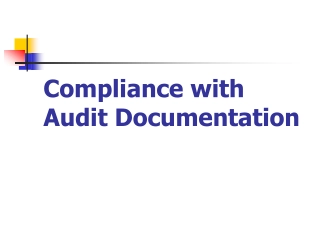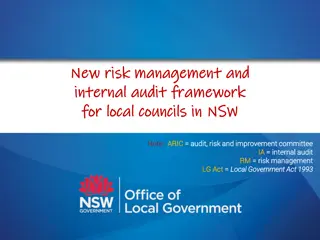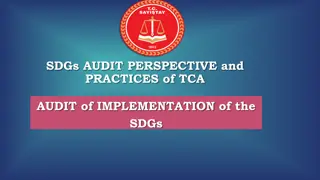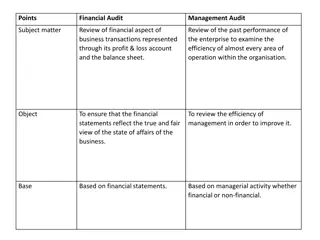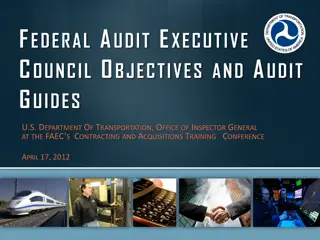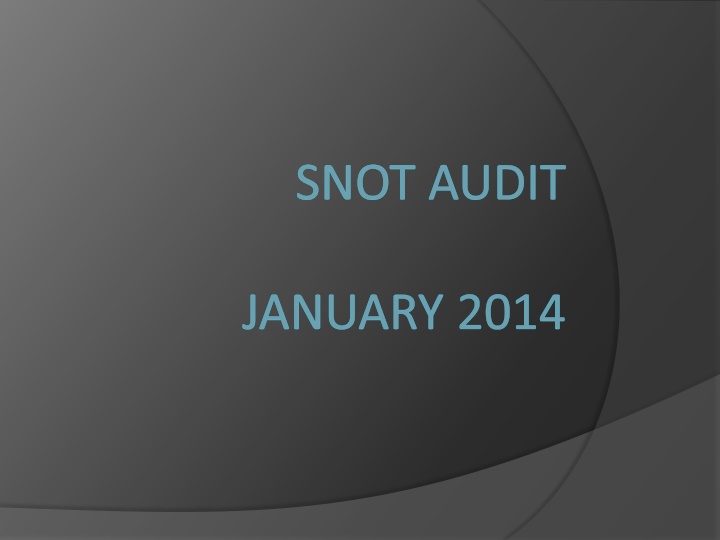
Assessment of Treatment Effectiveness in Sino-Nasal Disease Patients - January 2014 Audit
This audit conducted in January 2014 aimed to assess the effectiveness of medical or surgical treatment in patients with sino-nasal disease presenting to ENT outpatient clinics. The SNOT questionnaire was utilized to measure outcomes, with detailed methods and results provided for the assessment conducted by Surgeon A and Surgeon B.
Download Presentation

Please find below an Image/Link to download the presentation.
The content on the website is provided AS IS for your information and personal use only. It may not be sold, licensed, or shared on other websites without obtaining consent from the author. If you encounter any issues during the download, it is possible that the publisher has removed the file from their server.
You are allowed to download the files provided on this website for personal or commercial use, subject to the condition that they are used lawfully. All files are the property of their respective owners.
The content on the website is provided AS IS for your information and personal use only. It may not be sold, licensed, or shared on other websites without obtaining consent from the author.
E N D
Presentation Transcript
SNOT AUDIT JANUARY 2014
Aim To assess the effectiveness of medical or surgical treatment in patients with sino-nasal disease who present to ENT outpatient clinics
Method Forms collected between 1st September 2013 - 24th December 2013 (some forms were dated outwith these periods) Patients complete SNOT questionnaire prior to consultation Consultant completes clinical information on form Data from forms recorded on an Excel spreadsheet Paper copies filed alphabetically for each consultant Incomplete forms filed separately Sources of SNOT scores for the audit were: SNOT forms collected in this audit cycle Previously filed forms SCI-store letters
What is the SNOT Questionnaire? A patient-reported measure of outcome in treatment of sino-nasal disorders The SNOT questionnaire contains 20 questions The first half of the questionnaire relates to physical symptoms nasal, ear, and facial symptoms The second half relates to quality of life (sleep and psychological issues) http://www.entnet.org/research/outcomes/browne%202007.pdf health related quality of life
Results 404 forms returned 126 forms were able to be used in the audit (criteria for inclusion: Name, CHI, diagnosis, treatment, pre/post, and at least one SNOT score) 278 forms excluded from this audit cycle: Only pre-treatment score available at present (166) Discharged after 1st appointment (8) DNA 2nd appointment (3) Non sino-nasal disease (2) Only post-treatment score available (31) Forms missing name, diagnosis or treatment (68)
Surgeon A Number of Cases Average pre- treatment SNOT score Average post- treatment SNOT score Average improvement in SNOT score Number of patients improved MEDICAL TREATMENT 36 50 44 6 23 (64%) FESS + REVISION FESS 6 46 8 38 5 (83%) FESS + SEPTOPLASTY 1 22 8 14 1 (100%) SEPTOPLASTY +/- INFERIOR TURBINATE REDUCTION 7 34 14 20 6 (86%) SEPTORHINOPLASTY 1 61 54 7 1 (100%) Total 51
Surgeon B Number of Cases Average pre- treatment SNOT score Average post- treatment SNOT score Average improvement in SNOT score Number of patients improved MEDICAL TREATMENT 25 45 31 14 13 (52%) FESS + REVISION FESS 13 43 16 27 14 (93%) FESS + SEPTOPLASTY 4 44 16 28 4 (100%) SEPTORHINOPLASTY 5 36 13 23 4 (80%) Total Cases 47
Surgeon C Number of Cases Average pre- treatment SNOT score Average post- treatment SNOT score Average improvement in SNOT score Number of patients improved MEDICAL TREATMENT 15 35 27 8 12 (80%) FESS + REVISION FESS 3 41 26 15 3 (100%) SEPTORHINOPLASTY 10 39 19 20 9 (90%) Total Cases 28
Results Number of Patients Patients with Improvement in Symptoms Patients with Worsening of symptoms Symptoms Unchanged MEDICAL TREATMENT 76 51 (67%) 21 (28%) 4 (5%) FESS + REVISION FESS 22 21 (96%) 0 (0%) 1 (4%) FESS + SEPTOPLASTY 5 5 (100%) 0 (0%) 0 (0%) SEPTOPLASTY +/- INFERIOR TURBINATE REDUCTION 7 6 (86%) 1 (14%) 0 (0%) SEPTORHINOPLASTY 16 14 (88%) 2 (12%) 0 (0%) Total number of Patients 126
What Went Wrong? SNOT forms still not being completed fully 31 post-treatment SNOT forms did not have a pre-treatment form/score recorded on the form, available from the previously filed forms, or on SCI-store There is not a reliable way to hand over the audit data to the next group of doctors
Suggestions For Improvement SNOT scores could be recorded in the patient notes at clinic appointments, enabling them to be easily located at the next appointment, and so written on the next SNOT form If SNOT scores were recorded in all dictated letters, this would provide an easily accessible record of the score should the SNOT form not be fully completed in clinic

